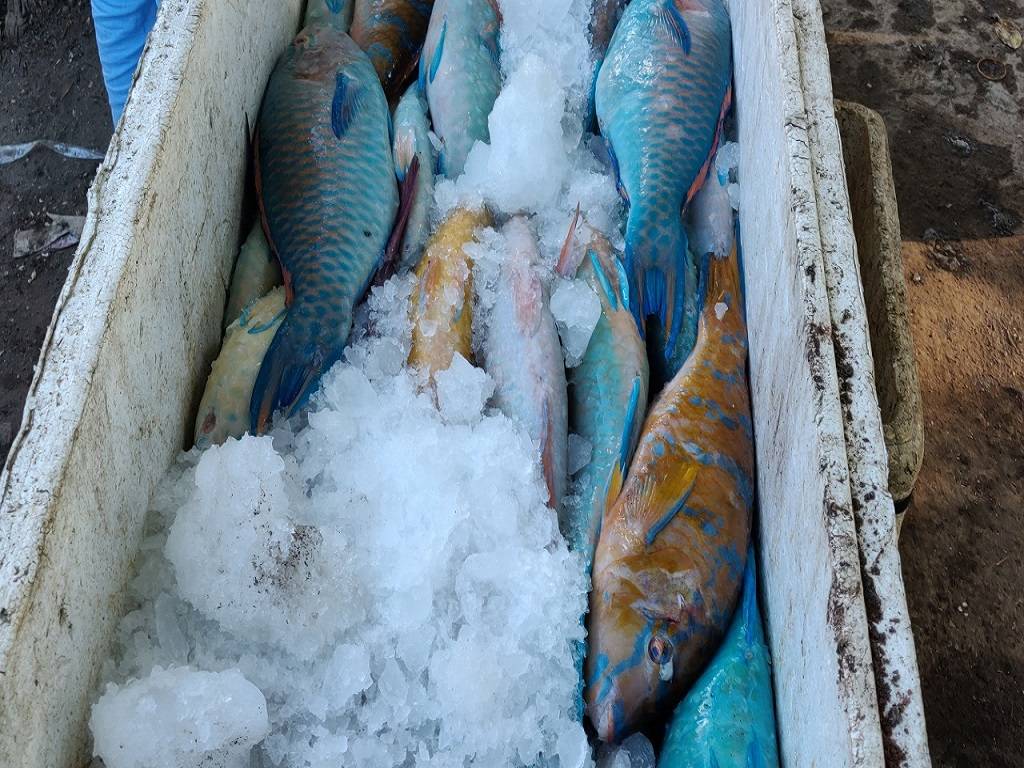
Fish preservation means keeping the fish, in a fit and wholesome condition for human consumption for a period ranging from days to months depending upon the type of preservation. Based on the desired end product attributes, many technologies are now used to preserve fish and fisheries products.
The techniques for preserving fish that are most frequently consumed include chilling, freezing, curing (drying, salting, and smoking), canning, marinating, and fermentation. Fish can also be preserved using various techniques such as modified atmospheric packing, and retort pouch packaging.
Chilling
The primary method of fish preservation by chilling is to reduce the temperature of the fish to almost absolute zero degrees Celsius in order to stall both biochemical and microbiological activities. With the lowering temperature the lag period of microorganisms will be extended, resulting in delayed growth. The lower the fish temperature, low will be the activity of enzymes and microorganisms.
MAP (Modified Atmospheric Packaging)
By altering the environment's gaseous composition and so generating adverse circumstances for microbial development thus creating unfavorable conditions for microbial growth (mainly due to the effect of carbon dioxide on microorganisms) and by avoiding the lipid oxidation.
Curing (drying, salting, and smoking)
Curing preserves by making the medium unsuitable for microbial proliferation, in contrast to canning, which results in the elimination of microorganisms and their spores. The main method for doing this is to increase the concentration of soluble chemicals in the medium, either by abstracting water or by causing soluble compounds to diffuse in (salting, brining, or sugar curing). Smoking preserves by adding bacteriostatic compounds like formaldehyde and phenols to the body in addition to bringing and dehydrating the soluble substances.
Canning and Retort pouch packaging
In order to achieve commercial sterility, where most microorganisms cannot live, with the exception of very heat stable spore formers, the items in hermetically sealed containers or pouches are mostly heated to high temperatures. To achieve commercial sterility using this method, the products are heated to high temperatures (121 degree C) for a predetermined amount of time. This reduces the risk of pathogens and toxins, particularly Clostridium botulinum, a high heat-resistant spore-forming and toxin-producing bacteria found in canned foods.
Irradiation
Food goods can be treated with radiation to lengthen their shelf lives and increase microbiological safety. The material, including food, can be significantly penetrated by electromagnetic radiations, specifically gamma and X-rays, which have short wavelengths (300 m) and more energy than visible light. These radiations cause ionization of atoms and molecules by removing electrons from their outer shells.
The scission of single or double strands of DNA, which is primarily brought on by the OH radical generated by the radiolysis of water, is the primary cause of the inactivation of live cells (microbial cells) by irradiation.
Marinating
The marinades are kept fresh by storing them in an acidic solution with salt and a pH of 4.5 that contains acetic acid and propionic acid. At a pH of 4.5 or below, the majority of bacteria that cause food deterioration and all bacteria that cause food poisoning stop growing, giving the product a distinctive flavour and a longer but finite shelf life. Acetic acid regulates pH and permits specific autolytic reactions to take place.
Fermentation
Enzymes or ferments, which are organic catalysts, break down complex organic molecules into simpler ones during fermentation processes. The goal of many fish preservation techniques is to preserve the fish meat as closely as possible to its original state. But when we talk about fermentation, we're talking about processes that transform wet protein into less complex elements that can survive at room temperature.











